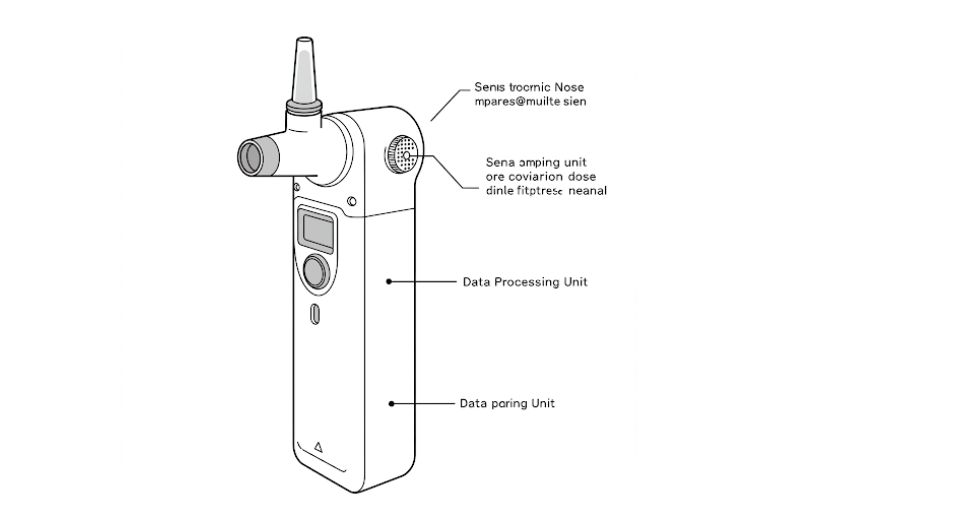
Aug 02, 2024

Metastat Insight study provides a clear insight into the changing landscape of the Global Electronic Nose market, signifying the incremental need for enhanced technologies in olfactory sensing across varied industries. The industry has developed fast through the refining of artificial olfaction systems for greater accuracy in odor detection by researchers and developers. The increasing acceptance of these technologies in the healthcare, food and beverage, and environmental monitoring sectors shows why this particular market is becoming increasingly viable. The transition of electronic noses from quasi-experimental technologies to commercially relevant applications is beginning to address industries' needs for improved quality control and safety.
Global Electronic Nose market is estimated to reach $80.98 million in 2025 with a CAGR of 10.19% from 2025 to 2032.
Industries are finding out many applications of electronic noses that are not strictly traditional. In the food and beverage industry, these systems are employed in assessing freshness, contamination detection, and product variability. Diagnosis of diseases, especially in non-invasive medical screening, is another application the healthcare field has been exploiting. Advances keep being made to enable these electronic noses to detect volatile organic compounds which could signal different health conditions with exciting prospects for early intervention and preventive medicine.
The advent of machine learning and artificial intelligence has further assisted the refinement of electronic noses in precision and efficiency. These technologies are capable of processing large datasets to recognize complex scent patterns that were previously difficult to delineate. With mirrors of the human olfactory function, they work in a very objective manner with no room for subjective interpretation. This fosters the applicability of electronic noses in a great many areas, such as the environment for air quality monitoring and hazardous gas leak detection. These markets are becoming more and more avenues of electronic nose applications for safety and compliance.
The evolution of technology has been one of the most important determinants of the growth of the Global Electronic Nose market. An investment into the development of small, inexpensive, and extremely sensitive sensors has lowered the burden on firms about implementing automated olfactory sensing into their processes. While enhanced systems have been developed to provide maximal efficiency and minimal errors, electronic noses may find themself gaining more traction as industries thus start placing greater importance toward maximizing such traits. Thus, being able to tell when a given scent's composition just subtly changes will set a company that much above the competition when it comes to product development, process optimization, and safety assurance.
Beyond the precincts of industrial applications, electronic noses have begun to make their entry into consumer electronics and smart devices. The burgeoning trend towards such products is integrated with olfactory sensing technology for house-held appliances worth personal care products that speak volumes with the higher acceptance angle that artificial olfaction is gaining. The trend seems stronger, leading manufacturers to consider incorporating sensor consumers into their everyday menu for innovations due to increased consumer awareness of hygiene, air quality, and fragrance preference. It is bound to improve how products will be experienced but, more importantly, underpins the practicality of electronic noses in everyday life.
Companies invest in research and development to overcome barriers to progress that require both sophisticated technology and operation experience. Calibration complexity, sensitivity to environmental conditions, and almost entirely extensive datasets needed to achieve consistent performance across applications hinder progress toward such a goal. Thus, research and development are still ongoing and aimed at crossing those significant barriers to achieving even more reliability and increase functionality. More companies are investing some resources in hybrid-sensing technologies, which will combine electronic noses with complementary analytical techniques in order to add more accuracy to them.
The Global Electronic Nose competitively represents the existing key players who are emerging as innovators trying to develop o-r sensing techniques. Such research institutions linked with industry leaders will therefore render a continuous interaction between knowledge and technologies for acceleration in this field. The increasing investment in R&D initiatives indicates a commitment to fine-tuning artificial olfaction systems and their practical developments.
Regulations and guidelines from industries have, however, continued to propel the development of these systems, requiring the manufacturers to obtain optimum performance while staying within the compliance parameters. The environment in which they operate justifies why electronic noses are described as the cornerstone of the future across several applications.
This study by Metastat Insight over the Global Electronic Nose market captures the larger implications of artificial olfaction shaping modern industries. The further time progresses and the respective technology matures, the expansion of this market indicates that increased sensory analysis will be part of its scope. This will only heighten the two-way dependence on precision and efficiency in industrial and consumer applications. Further applications automated olfactory sensing captures the imagination around which innovation can revolve and is thus a transformative agent in many domains.
Drop us an email at:
Call us on:
+1 214 613 5758
+91 73850 57479